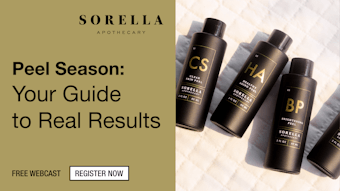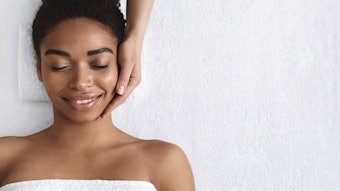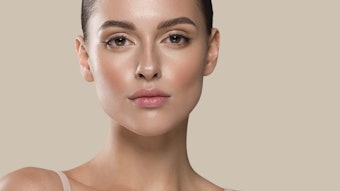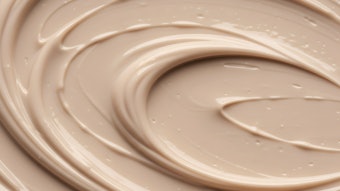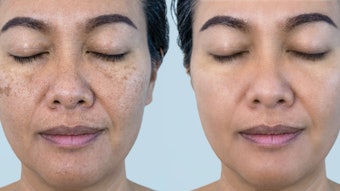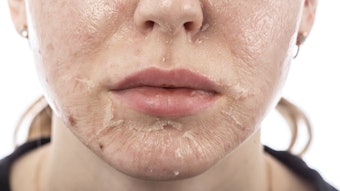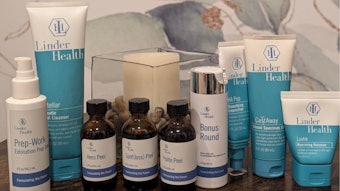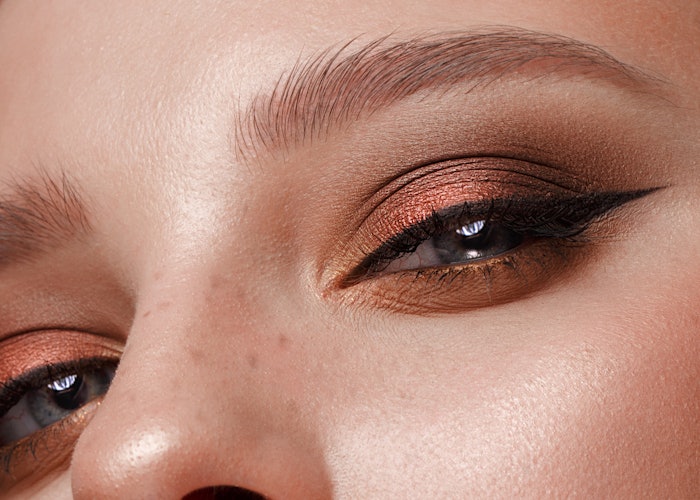
The eyes are considered the focal point of the face; it is the first area we are drawn to when looking at another person. The skin around the eyes is also one of the most delicate and complex areas of the face, often showing the first signs of aging. Due to its thin structure, high mobility, and constant exposure to environmental stressors, it is particularly prone to aesthetic changes. It shows up as wrinkles, ptosis, dark circles and puffy eyes. A clear understanding of the anatomy and physiology of this region, along with its unique characteristics, is essential for delivering effective, targeted treatments. This article delves into the structure of periorbital skin, explores common aesthetic concerns, and highlights potential treatment options.
Anatomy of the Skin Surrounding the Eyes
The skin around the eyes is unique and requires special care due to its delicate structure. Factors like thinness, reduced oil production and constant movement make this area more prone to dryness, discoloration and early signs of aging. Here’s what you need to know:
- Thinness: The skin surrounding the eyes is much thinner than the rest of the face. The skin here is about 0.3-0.5 mm thick, while the rest of the facial skin averages around 2 mm in thickness. This makes imperfections appear more easily.
- Sebum: There are fewer sebaceous glands in this area, leading to less oil production. This makes the area more prone to dryness and early signs of aging.
- Blood vessels: The eye area has a dense network of blood vessels, making it prone to discoloration, particularly dark circles. The vessels are also more apparent due to the thin skin.
- Movement: The eye area undergoes constant movement due to blinking, expressions, and squinting. This leads to the early formation of fine lines and wrinkles.
- Fat: The thinner, more delicate fat around the eyes is primarily used for protection and mobility of the eyeball. Fat loss or shifting can lead to hollowing under the eyes. Fat displacement can leads to under eye bags as orbital fat moves forward.
Understanding Upper Eyelid Aging: Causes and Factors Behind Visible Changes
 Thinning skin and wrinkles occur as the eyes age. The thin skin becomes more fragile, increasing the visibility of blood vessels and fine lines.Pixel-Shot at Adobe Stock
Thinning skin and wrinkles occur as the eyes age. The thin skin becomes more fragile, increasing the visibility of blood vessels and fine lines.Pixel-Shot at Adobe Stock
There are several factors that influence the appearance of the eyelid as it ages. There is a natural decrease in collagen and elastin production, causing less resilient skin. The loss of elasticity and firmness leads to drooping, known as ptosis. Ptosis can reveal age, make one look tired, or impair vision.
Another factor is volume loss and fat movement. In younger eyes, fat pads are evenly distributed, with age loss a shifting of fat is common. This can lead to hollowing near the brow bone and puffiness along the lash line, making the eyelids look heavy. These visible changes can be worsened by the weakening of the levator muscle, which helps lift the eyelids. As the muscle weakens, the eyelids gradually droop, causing more ptosis.
Thinning skin and wrinkles also occur as the eyes age. The thin skin becomes more fragile, increasing the visibility of blood vessels and fine lines. Crepey textures are common due to dehydration and lack of oil. Let’s not forget environmental factors—sun exposure, excessive blue light and pollution—all create free radicals that lead to premature aging. Constant tugging, pulling, or rubbing also contributes to the visible aging of the skin around the eyes.
How to Slow Down Upper Eyelid Aging
- Hydration: The use of an eye cream or gel with hydrating ingredients such as hyaluronic acid, ceramides, and peptides to keep the eyelid skin moisturized and plump.
- Sun protection: The application of a gentle, broad-spectrum SPF around the eyes to prevent sun damage. UV protective sunglasses should also be worn year-round.
- Retinoids: Low levels of vitamin A formulated for the eye area will help build collagen and keep the skin in a healthy state.
- Antioxidants: For protection from damage caused by UV and blue light exposure, antioxidants such as Vitamin C, niacinamide, or green tea extracts should be used.
- Upneeq (oxymetazoline hydrochloride ophthalmic solution, 0.1%): An FDA-approved prescription eye drop for adults with low-lying eyelids. It is clinically proven to give lifted, more open eyelids that last up to 8 hours.
- Microcurrent: Encourages neuromuscular activity and ATP production helping the eyelid regain lifting ability.
- Medical device treatments: Fractional laser resurfacing, microneedling, radio frequency, or RF microneedling may be used for skin tightening and collagen production. The use of these treatments in this delicate area is debatable. With proper education, medical providers or delegates can successfully treat the area with little risk.
- Neuro modulators: These injectables can be used to relax the downward pulling muscles, allowing the brows to lift more effectively.
- Surgery: In cases of severe drooping, especially when it interferes with vision, blepharoplasty/eyelid surgery can remove the excess skin.
Understanding and Addressing the Causes of Dark Circles
 Dark circles around the eyes are a common aesthetic concern that affects people of all ages and skin types. Discoloration under the eyes can make people look tired, older or even sick. To know how to treat the skin correctly in this area, you must first look at the cause.Pormezz at Adobe Stock
Dark circles around the eyes are a common aesthetic concern that affects people of all ages and skin types. Discoloration under the eyes can make people look tired, older or even sick. To know how to treat the skin correctly in this area, you must first look at the cause.Pormezz at Adobe Stock
Causes of dark circles include vascular issues, hyperpigmentation and hollowing. Below is a collection of treatment recommendations for each cause.
Treatments for Vascular Dark Circles
Vessels under the eye may appear darker due to poor circulation and the pooling of blood under the eyes. This can be caused by lack of sleep, dehydration, unhealthy diet, smoking, excessive drinking, lack of exercise, screen time and allergies. The vessels could also be more visible due to genetics, more vascularity in the area or thinner, more transparent skin. Noticeable vessels are more common in lighter skin types. Treatments include:
- Lymphatic drainage massage: Helps improve circulation and reduce stagnation of blood.
- Cold compresses: Ice rollers, cool globes, and specialized devices constrict blood vessels to reduce visible dark circles.
- Caffeine: Caffeine in eye products helps constrict blood vessels and improves blood flow.
- Vitamin K oxide: Helps to reduce the pooling of blood under the skin, visibly reducing the darkness associated.
- Collagen builders: Help to thicken skin. Peptides, growth factors, stem cells, vitamin A or exosomes all can be used.
- Circulation: Gentle massage nightly while applying eye products, including tapotement improves circulation. Nano-facials, microcurrent, LED, radio frequency, ultrasound, carboxytherapy and even regular exercise can improve overall circulation.
- Intense pulsed light (IPL) therapy: IPL works by heating and collapsing vessels beneath the skin.
Treatments for Pigmented Dark Circles
Melanin deposits can cause dark circles in the skin. For many people with darker Fitzpatrick types (IV-VI), they are often genetic. Those with naturally darker skin can show more pigment in the thin skin under the eyes. Sun exposure also increases hyperpigmentation, and the delicate eye area is not always protected as it should be. Inflammation causes post-inflammatory hyperpigmentation. Frequent eye rubbing due to allergies, dry eyes or contact lenses adds repeated mechanical stress to the delicate skin around the eyes, triggering pigment production. Treatments for pigmented dark circles include:
- Topical brighteners: Ingredients such as vitamin C, kojic acid, niacinamide, licorice extract, tranexamic acid or arbutin interrupt the pigmentation process to lighten darkened skin.
- Sun protection: Daily use of sunscreen with SPF 30+ and sun protective sunglasses is essential to prevent further darkening.
- Gentle care: No rubbing, pulling, or tugging. Use gentle cleansers to remove makeup from the eye area.
- Microneedling and platelet rich plasma (PRP): PRP or is suggested to inhibit melanin production, while stimulating collagen.
- Chemical peels: Light peels with lactic acid and/or mandelic acid can reduce the buildup of melanin. Some medical providers use TCA or other deeper peels.
- Laser: Fractional lasers work by heating portions of the skin to smooth uneven texture and discolorations.
- IPL: IPL can help break down existing pigmentation.
Treatments for Dark Circles Caused by Hollowing
Hollowing is a frequently overlooked cause of dark circles under the eyes. It is influenced by factors such as genetics, aging, lifestyle and medical conditions. The orbital rim recedes over time due to bone loss, reducing support for the overlying fat and muscle, leading to a sunken appearance beneath the eyes. Additionally, changes in the fat pads occur with aging, resulting in fat loss. There is also fat migration, where the fat shifts downward, exacerbating hollowing while creating a bulging appearance in the lower eyelid region. Treatments include:
- Collagen stimulators: Vitamin A, peptides, growth factors or exosomes stimulate collagen production and improve skin elasticity.
- Microneedling and radio frequency (RF) therapy: Encourages collagen synthesis and skin renewal.
- Hyaluronic acid fillers: Restore volume and reduce the appearance of shadows under the eyes.
- Blepharoplasty: Surgical removal or repositioning of fat to reduce the hollowing.
Understanding and Addressing Under-Eye Puffiness: Causes and Treatments
 Puffiness, or under-eye bags, are a common aesthetic concern that becomes more prominent with age. This can be caused by fluid retention, decreased skin elasticity or the accumulation of excess fat.djoronimo
Puffiness, or under-eye bags, are a common aesthetic concern that becomes more prominent with age. This can be caused by fluid retention, decreased skin elasticity or the accumulation of excess fat.djoronimo
Treatments for Swelling
- Sleep: Getting sufficient sleep with the head elevated; 7-9 hours per night is recommended.
- Cold compresses: Ice rollers, cool globes, and specialized devices reduce excess swelling.
- Hydration: Reducing salt intake and drinking 8-10 glasses of water a day will reduce water retention.
- Stimulation: Nano-facial, microcurrent, gua sha, gentle massage, LED can all increase circulation.
- Caffeine: A vasoconstrictor that reduces swelling by tightening blood vessels.
- Peptides: Strengthen skin structure, reducing sagging and puffiness over time.
- Anti-inflammatories: Green tea extract and chamomile are a few that contain antioxidants and soothe inflammation.
- Lymphatic drainage massage: Helps reduce excess fluid buildup.
Treatments for Fat
- Microneedling and RF therapy: Tightens skin and improves circulation.
- Blepharoplasty (eyelid surgery): Removes excess skin and fat deposits to eliminate severe under-eye bags.
Essential Tips for Caring for the Delicate Skin Around Your Eyes
The skin around the eyes is uniquely delicate and requires specialized care to maintain its health and appearance. Addressing concerns like dark circles, puffiness and aging with effective treatments can help preserve youthful and vibrant skin. A combination of targeted skin care ingredients, lifestyle modifications and professional treatments ensures optimal eye care and long-term results.
References
Goldman, A.; Goldust, M.; Wollina, U. Periorbital Hyperpigmentation—Dark Circles under the Eyes; Treatment Suggestions and Combining Procedures. Cosmetics 2021, 8, 26. https://doi.org/10.3390/cosmetics8020026
Park KY, Kwon HJ, Youn CS, Seo SJ, Kim MN. Treatments of infra-orbital dark circles by various etiologies. Annals of Dermatology. 2018;30(5):522-528. Published online August 28, 2018. doi:10.5021/ad.2018.30.5.522
Vrcek, Ivan; Ozgur, Omar; Nakra, Tanuj. Infraorbital Dark Circles: A Review of the Pathogenesis, Evaluation and Treatment. Journal of Cutaneous and Aesthetic Surgery 9(2):65-72, Apr–Jun 2016. https://doi.org/10.4103/0974-2077.184046
Kołodziejczak, A., & Rotsztejn, H. (2024). The Impact of Carboxytherapy and Treatments Combining Carboxytherapy and Selected Chemical Peels on Vascular and Pigmentary Components of the Dark Circles. Clinical, Cosmetic and Investigational Dermatology, 17, 1875–1885. https://doi.org/10.2147/CCID.S469708
Chandrashekar, B. S., & Soumya, S. Effectiveness and Safety of Topical Under-eye Serum in Patients with Periorbital Hyperpigmentation: An Open-label Single Arm Prospective Study. J Clin Aesthet Dermatol. 2022 Feb;15(2):18-22. PMID: 35309875; PMCID: PMC8884187.
Hamie, Hanin B.; Yassine, Reem B.; Shoukfeh, Rajaa B.; Turk, Dilara M.; Huq, Farhan M.; Moossavi, Meena M. A Review of the Efficacy of Popular Eye Cream Ingredients. International Journal of Women’s Dermatology 10(2):e156, June 2024. https://doi.org/10.1097/JW9.0000000000000156
Aldag, C.; Nogueira Teixeira, D.; & Leventhal, P. S. (2016). Skin Rejuvenation Using Cosmetic Products Containing Growth Factors, Cytokines, and Matrikines: A Review of the Literature. Clinical, Cosmetic and Investigational Dermatology, 9, 411–419. https://doi.org/10.2147/CCID.S116158
Dhillon, P. D., Dhillon, V., & Rustagi, I. M. (2024). A Review of the Efficacy of Different Topical Active Ingredients on Various Periorbital Skin Concerns. CME Journal Geriatric Medicine, 16(2), 87-95.



